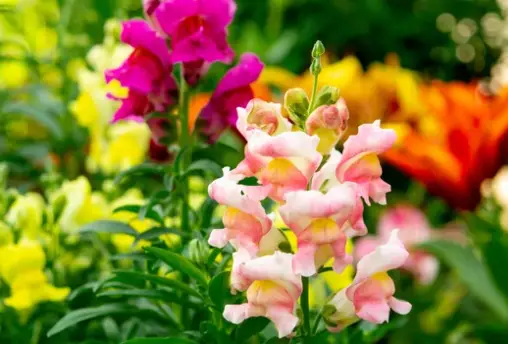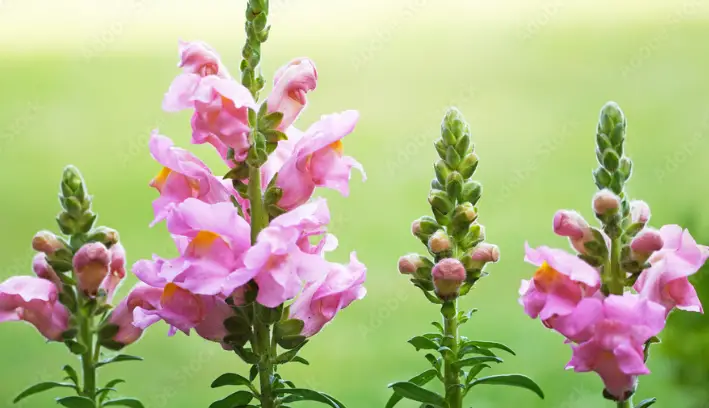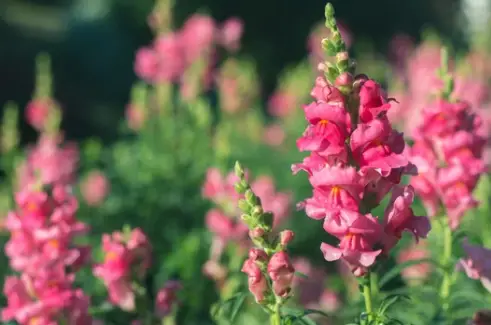The world of plants is filled with fascinating structures, and one such captivating marvel is the Snapdragon flower seed pod.
In this blog post, we delve into the intricate details of the Snapdragon flower seed pod, exploring its characteristics, lifecycle, and the wonders it holds. Join us as we unravel the secrets of this natural wonder.
What is a Snapdragon Flower Seed Pod?

The Snapdragon flower (Antirrhinum majus) is an enchanting plant known for its vibrant and distinctive blossoms.
The Snapdragon flower seed pod, also known as the fruit or capsule, is the structure that develops after pollination and fertilization occur.
It is an ovary that houses the developing seeds, and its shape, size, and color can vary depending on the Snapdragon species and cultivar.
The Lifecycle of the Snapdragon Flower Seed Pod

The lifecycle of the Snapdragon flower seed pod is a captivating journey. It begins with the pollination of the flower, where pollen grains are transferred from the anthers to the stigma.
Once pollination occurs, the pollen tube grows down the style and reaches the ovary.
Fertilization takes place, resulting in the formation of seeds within the seed pod.
As the seeds mature, the seed pod undergoes changes in color and texture, eventually opening up to release the seeds.
Anatomy and Structure of the Snapdragon Flower Seed Pod
The Snapdragon flower seed pod consists of several distinct components.
The ovary is the central part of the pod where fertilization occurs and the seeds develop. The style connects the stigma to the ovary, providing a pathway for pollen tubes during pollination.
The stigma is the receptive surface that captures pollen grains.
The seed pod is further protected by outer layers that shield the developing seeds from external factors.
Seed Dispersal Mechanisms

The Snapdragon flower seed pod employs various mechanisms for seed dispersal.
One method is explosive dehiscence, where the mature pod rapidly opens and releases the seeds, propelled by tension built up within the pod walls.
This mechanism helps the seeds scatter over a wider area. Additionally, gravity-assisted dispersal plays a role in Snapdragon seed dispersal, allowing seeds to fall to the ground and find suitable locations for germination.
Animals, such as birds and insects, can also aid in seed dispersal by carrying the seeds on their bodies.
Significance and Benefits
The Snapdragon flower seed pod plays a crucial role in the reproductive success of the Snapdragon plant.
The production of seeds ensures the continuation of the species and allows for genetic diversity.
Furthermore, Snapdragon flowers are beloved by pollinators, attracting bees, butterflies, and hummingbirds, contributing to pollination and the overall health of ecosystems. In horticulture and gardening, Snapdragon seeds are highly valued for their ornamental beauty, and cultivating them adds vibrant colors to gardens and floral arrangements.
Cultivating and Collecting Snapdragon Seeds
To collect Snapdragon seeds, wait until the seed pods are fully mature and have turned brown.
Gently pinch the pod near the base and carefully extract the seeds. Store the seeds in a cool, dry place until you are ready to plant them.
To cultivate Snapdragon seeds, sow them in well-draining soil in a sunny location, and keep the soil consistently moist.
With proper care, germination should occur within a couple of weeks.
Fun Facts and Folklore

Snapdragon Flower Seed Pod
- Did you know that the name “Snapdragon” comes from the flowers’ resemblance to a dragon’s head that opens and closes its mouth?
- In some cultures, Snapdragon flowers are associated with protection against witchcraft and evil spirits.
- According to folklore, if you squeeze the sides of a Snapdragon flower, it will open like a dragon’s mouth and “snap” shut when released.
Conclusion
The Snapdragon flower seed pod stands as a testament to the wonders of nature. Its unique structure, lifecycle, and seed dispersal mechanisms demonstrate the beauty and complexity of plant reproduction. By exploring the Snapdragon flower seed pod, we gain a deeper appreciation for the intricate marvels that exist in the natural world, and we are inspired to protect and nurture the diverse flora that surrounds us.
References:
- University of California Agriculture and Natural Resources. (n.d.). Growing Snapdragons in the Garden. Retrieved from http://ipm.ucanr.edu/PMG/GARDEN/FLOWERS/snapdragon.html




